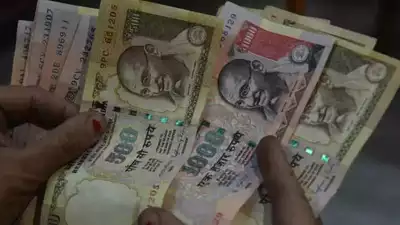In 2016, the Supreme Court ruled that there was no mistake in the Narendra Modi government’s decision to demonetize. However, even as four judges of the five-member constitution bench reached this conclusion, one judge termed the Modi government’s move as ‘illegal’.
On November 8, 2016, the Narendra Modi government announced the cancellation of 1000 and 500 rupee notes. The new 500 rupee note came back after the old note was canceled. Along with this, a new note of 2000 rupees was introduced. Suddenly 86 percent of the country’s total currency notes were canceled and the common people of the country faced great hardship. Huge queues could be seen outside the banks to get new money. Many people got sick in the rush to exchange money. The Centre, however, argued that the move was necessary to bring transparency to the economy by curbing the rampant black money.
But later it was seen that almost all the money from the open market returned to the bank. As a result, the question of how successful the Modi government’s intention had been in demonetisation, and political turmoil started. The controversy reached the doors of the Supreme Court. 58 applications were filed in the Supreme Court.

Statement of the judgement
Justice BR Gavai read out the majority verdict in that case yesterday. The judgment by Justice SA Nazir, Justice AS Bopanna, Justice V Ramasubrahmanyan, and Justice Gavai said there was no legal or procedural error in the central government’s decision to demonetize the notes in 2016. The central government and the Reserve Bank of India also held discussions for about six months before taking the decision. As a result, there is no reason to think that anything bad has happened in the eyes of law as the demonetization proposal has come from the government and not from the Reserve Bank.
According to these judges, the time limit of 52 days given for the exchange of canceled notes is also not unreasonable. An example of demonetization in the past has been cited, in 1978, after the decision to demonetize, 8 days were given to exchange money. In 1980, the Supreme Court upheld that move.
Despite all the controversy at the political level over the Modi government’s decision, according to the majority of the Supreme Court’s constitution bench, it is not for the court to see whether the purpose of demonetization has been achieved. Because the judges are not supposed to see whether the government has achieved any policy goal. The court will judge whether the matter is legally correct. According to the judges, courts rarely interfere with the government’s fiscal policy and such policy decisions have to be approached very cautiously.
Wrapping up
However, four judges ruled that there was no ‘mistake’ in the demonetization decision, but another judge, BV Nagaratna, dissented. She termed the central government’s decision as ‘illegal’. According to her, the demonetization decision is legally and procedurally flawed. According to her, the demonetization decision could have been taken through the legislature rather than taking an administrative decision at the government level.
